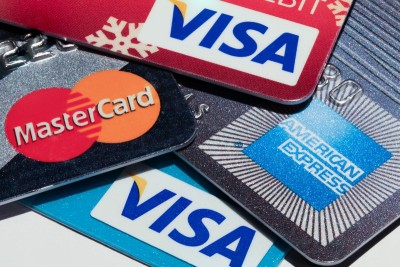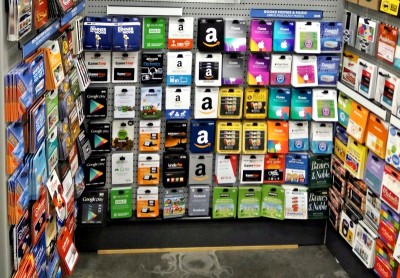I Don’t Need a Best Card for Everyday Spend
It seems that a lot blogs and credit card related websites like to talk about the, “Best card for everyday spend”. Of course I am guilty of talking about that exact topic as well. The truth is that so much digital ink is spilled in the search for the perfect card because a lot of people care about that topic. A lot of you are looking for said “perfect card”.
Even though I reserve the right to cover the topic for the vast majority of people out there, the truth is that I don’t really worry too much about which card I use for everyday spend. I know that is kind of a crazy statement, but it is one that I have been increasingly more motivated to write about. Before I go any further, I know my situation is not typical for a lot of you, however my reasoning will still have some value for most people I think.
Everyday Spend for Minimum Spend
Perhaps the main reason I don’t worry about having a terrific card for everyday spend is because I am constantly working on minimum spend requirements. While sometimes I MS to hit requirements, I also fold my regular spend into that. I think it is good for banks to see normal spend on a card and I figure I might as well use newly acquired cards for that reason.
Over the years as I have become more comfortable with larger spends, I have taken on increasingly higher “challenges”. For example, as I have written about over the past couple of months I took on the $20K spending requirement on the American Express Business Platinum card. As part of hitting that requirement, I used the card for a car down payment, car registration and other miscellaneous everyday expenses.
Bonus Categories
There are a few categories that I have covered pretty well across the board with certain cards. I have a card that gives me about 5% at grocery stores and drug stores, another one that gives me 3% at gas stations, one that pays 5X at office supply stores (Ink) and a couple that give me 2X on dining (Sapphire Preferred & ThankYou Premier). Of course I also have Discover, Dividend and Freedom which give me 5% in rotating categories throughout the year.
While I haven’t scientifically gone and looked at how much of my spending is in those categories, I am quite sure it is a significant portion of my overall spend. In other words, even if I wasn’t constantly working towards minimum spend requirements, I would still be covered with really good category bonuses most of the time.
Retention Bonuses
One of the most valuable points earning tools for my wife and I over the past year have been retention bonuses. We are working on back to back 3X everywhere bonuses on the Citi ThankYou Preferred card, which means it automatically has become our “everyday spending” card. Of course there are other retention bonuses from other banks that may entice you to switch your regular spending in order to gain a bonus.
When you get a retention offer of say 10K points for $5K in spend (a popular offer on the Chase Ink cards for example), it is important to calculate your payback with that bonus. With the Ink example, you would receive a total of 3X on all spend for that $5K, so it totally beats out pretty much anything else for everyday spend.
Category Shift
One other popular method that people use to maximize rewards is category shift. Although I don’t know if that is the official term, I like it. Category shift is basically purchasing gift cards for one merchant at another merchant. For example a popular thing to do is to purchase Amazon gift cards at Staples with a Chase Ink card. This way instead of earning say 2% on Amazon purchases, you are earning 5X Ultimate Rewards points.
Those 5%/5X bonuses on the Discover, Freedom and Dividend cards are good for this as well. Lowe’s, Home Depot, Sears, Kohl’s and other stores are often featured as 5X merchants and they all sell third party merchant gift cards. You can category shift and gain greater rewards for a lot of spend.
The 2% Card
When all else fails, there is always the 2% card to fall back on, although if I’m being honest, I wouldn’t lose sleep if I didn’t have one. After everything I mentioned above, there simply isn’t much everyday spend left. Even if I used just a regular 1X earning card, my losses would be so minimal in the scheme of my overall earnings that I wouldn’t even notice.
Of course for those who do care, it is probably wise to have a 2% card. Citi has their Double Cash and BofA has the Fidelity Amex card. I used to value my Barclay’s Arrival, however I cancelled mine after Barclay’s gutted the card. Then there is the Bank of America Travel Rewards card that earns 2.625% for those with some cash to park at the bank. All good options for someone looking for that credit card earning floor.
Conclusion
As you can see, with minimum spend requirements, category bonuses, retention bonuses and the ability to purchase gift cards and shift spend, I simply don’t have very much if any everyday spend left. I do think quite a lot about which cards earn the best bonuses in the categories I spend a lot in, but that “best card for everyday spend” simply isn’t something I am worried about right now.






[…] 「まったくその通り!」 と思える記事を見つけたのでシェアします。 情報源はMiles to memories 要約すると、 […]
Very good point indeed. On the category change, it is especially true if you can buy a gift card with it, then you’re essentially shopping everywhere with that category rate. The trade-off is having prepaid that. For instance by end of Dec 2014 I was a bit trigger happy with the Freedom Amazon category and purchased Amazon gift cards value worth several hundreds, which I still haven’t used them all. I have no problem floating that but the point is, I prepaid for that spend that hasn’t happened yet in almost a year. It than comes down to math.
Another reason I don’t always use the everyday 2% card is that I want to put some regular spend on my other credit cards, don’t want them to only have $500+ purchases for gift card at only X and Y store. The same goes for my 3 Redbirds.
How did you use a credit card for a car down payment!?? I want to do this!
Most dealerships will let you do it up to a certain amount. Just ask when you are purchasing.
Also, see this: https://amexnetwork.truecar.com
My “everyday” card is always an Amex gift card. I’m always earning either 4% or 2% + points. Living this way makes all “bonus categories” worthless to me unless they are 5X.
True and I have no argument against this line of thinking. It is perhaps a bit too complicated for some people, however Amex gift cards (barring today’s Top Cashback development) are certainly a great way to juice up your earnings.
Well, it looks like TCB was only the first domino and I now need a new spending strategy. I’m not going to carry 20 cards in my wallet, so (at least until Plastc is ready) I need to figure out what I’m doing. My new philosophy is that, if I’m not in the middle of a minimum spend, then I’m working towards a particular award, so I will spend on a card to get AA miles or MR points or Wyndham nights or whatever I need, because I’m never earning in a completely speculative manner. I always have an idea for a trip in mind.
How did you use a credit card for a car down payment?! I would love to do that.
Good post and I agree with you. I’d just add a couple things. First, I know that I still find times (quite a bit actually) where I run into non-category spend items and I’m not working towards any minimum spends (and it’s not convenient or possible to buy a discounted gift card). Second, I do enjoy building up a points balance on the 2.625% Travel Rewards card (or previously the 2.22% Arrival Plus) to use to pay for travel expenses that can’t be paid for with miles/points.
I see the argument for and against an everyday card. I split down the middle though.
I find most often that I need to use my everyday spending to meet minimum requirements (I’d say at least half of our everyday spend). However, I love catching “deals” and having my recurring expenses (like utilities) paid with the same card via auto draft because I don’t to mess up and not pay my bills.
So for the recurring expenses, I use a 2X card, and if my husband and I do not have a minimum spend to meet, I use the “best” card we have for each type of expense – Chase Freedom for the 5X promotions, AMEX everyday for groceries, Chase Sapphire or Barclays for dining, airline credit cards for tickets/airline charges, AMEX for promotions they run, and Barclays for any other spending. We have other cards, but I think you get the picture.
I keep it simpler for my husband – he does not pay for groceries or airline tickets, he uses Chase Sapphire for dining and car rentals, uses gas cards or the Chase Freedom for gas, and I tell him what to purchase with the Chase Freedom card each quarter. And anything there is an AMEX deal or another credit card that needs to be used, we do it together so he does not have to track it in his head.
Why are you only earning 3% at gas stations? Get a BarclayCard Sallie Mae ($250 a month limit for gas), Fort Knox CU (no limit), PenFed (not my Fav anymore) or even the Sams Club Mastercard (if you are a member and pays out annually).
Great post. I agree that there’s little reason for an everyday spend card. It’s more for comfort than it is utility that those of us seasoned MS’ers would keep such a card.
Even though I have the FIA Amex (everyone should) I rarely use it for everyday spend. I’m working on a Citi cc minimum spend and also working on adding spend and history to a 11 year old Capital One credit card that was recently converted to a Quicksilver cc. Problem is they won’t increase the paltry limit until there’s more history and usage.
For many though, and I can’t fault them at all for wanting an everyday card. They want a few cards to keep things simple and find a balance between mentally juggling 15 cards and still getting decent returns. In essence they want to synthesize the equation into a result that uses as little mental capacity as possible. It’s a logical pursuit that we all unconsciously try to attain and if you know anything about how habits are formed it makes life easier with less thinking and more automation.
Ask my wife (or many of your spouses) for insight into this rationale and you’ll hear that us nutty MS’ers over complicate things! I can’t disagree with her either, as I’m constantly trying to find that balance.
So that’s the best summary of this topic that I’ve seen.
My go-to is the Citi DC though, with BofA/Merrill as one of my banks (enough for the “full” bonus), I’ve been tempted by the 2.625% card. Do you know how seamless redemption is?
The redemption on the Travel Rewards is very easy. Only restriction is that the statement credit must be for a travel item (defined very broad) and must do at least $25 in redemption at a time (can be multiple items that add up to $25+).
What if you’re having a baby? Can you Category Shift from Staples to say Babies-R-Us?
YMMV but… DD took over EVERYTHING. No way in hell would I take the time for an extra stop to buy a GC, or devote the mental energy to keeping track of all the balances for the GCs at places we shop. Our 2nd will be born this winter and I’m planning on a break from churning/MS for at least 4 months.
What does DD mean?
I agree and share similar sentiments regarding MS related activities when juggling life and children.
Everyone’s situation is very different but if there was one thing bit of advice I’d give myself in the past is that you’re better off starting with pajama MS and slowly expanding from there. Looking back, doing the vgc to prepaid loading was a huge time commitment and required a lot of planning and dealing with unexpected issues. Had I known the other side of it I’d of never done it. Was it great experience? Absolutely. But it’s not for everyone and it’s my opinion that the gift card to prepaid gravytrain is over hyped, similar to the ‘sapphire prefered’ discussion we always see.
At this point the only place vgc have in my strategy is as a means of completing another deal. Let me give you a great example of what I mean by pajama MS and using vgc as a means to an end. If you were lucky enough to get in on the Staples Amex offer of $20 off $100 there’s an opportunity to buy $100 vgc online and liquidate them at your convenience when your next shopping trip comes up.
Theoretically the ideal situation is to split a transaction of one $200 vgc (in store only) and use two Amex cards and capitalize on two offers. The reason is you pay $7 in fees as opposed to $6 for a $100 vgc.
What I did however was buy $100 vgc online and have them mailed to me. Yes, I lose $2.50 per $20 offer. But what do I gain? Time. Mental capacity. Life balance. I can buy them at 7 am before my daughter wakes up and move on to the next deal. I won’t go into another tangent (Shawn loves reading my blog books, *ahem* posts!) but there’s something to be said for looking for the next deal and not over expenditure into one deal with a low ceiling.
Point is you have to go slow and figure out what works for you, your life and find a balance. Having children as you know makes it much harder to MS, but I’d have it no other way as I prefer spending time with my daughter as opposed to earning that extra $2.50 per amex offer and have to go to the store and hope I walk out with gift cards. 🙂
what about the discoverit miles? effectively a 3% everyday card for the first year